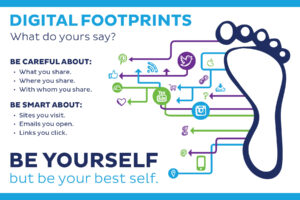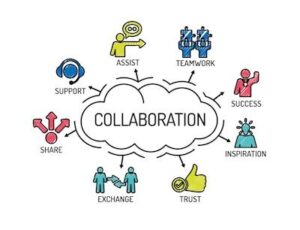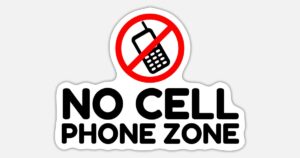It’s 2024, and let’s face it—we’re all curating. We curate our Instagram feeds, our outfits, and even our breakfast. (Who knew a smoothie bowl could be so photogenic?) But here’s the million-dollar question: are we curating ourselves? When teenagers are constantly scrolling through aesthetics, micro-labels, and influencer trends, it makes you wonder—are we still searching for our true selves, or are we just cosplaying whatever’s hot this week?

Welcome to the Identity Crisis, TikTok Edition
As social media has wormed its way into nearly every aspect of our lives, it’s especially giving teens a bit of an identity crisis (to say the least). Gone are the days when teen self-discovery meant listening to emo music or experimenting with questionable hair colors. Nope, now it’s about whether your digital persona should be #cottagecore or #alt.
And that’s where things get tricky. Teens today are stuck in this awkward push and pull between trendy identities and their real, offline selves. One day you’re an aspiring VSCO girl, the next you’re full-on dark academia—and guess what? Neither version quite feels like you. If it seems like a revolving door of personalities and aesthetics, that’s because it kind of is.
Kareena and Emma, two brave souls who’ve stepped up to tackle this phenomenon in their speech on social media and identity, know exactly what this feels like. Back in 2020 (a year we all remember for… reasons), their own sense of self started to unravel, and they’re far from the only ones. Social media was amplifying their identity confusion, and they began to wonder—are they really living as their true selves, or are they just mimicking whatever’s trending on their feeds?
The Illusion of Self (or: Who Am I Today?)
According to Khalil Liouane’s piece on The Illusion of Self in the Digital Age, social media turns our sense of self into an elaborate game of dress-up. Instead of being rooted in experiences, relationships, or even our quirks, we’re now hovering over a “choose your fighter” screen, trying on different identities like outfits for a party we’re not sure we’re invited to.

Liouane breaks down the problem beautifully: as our online presence grows, we start to lose touch with who we actually are. Social media encourages us to become shapeshifters, adopting different personas based on trends, aesthetics, or what will get the most likes. And as teenagers, the pressure to keep up with these trends can feel like trying to solve a Rubik’s cube on a rollercoaster.

This isn’t just about following the latest TikTok dance or updating your Spotify playlist to reflect the vibe du jour. It’s about constantly questioning: Am I more of a “brand” than a person now?
Aesthetic Overload: When Being ‘On-Trend’ Becomes a Full-Time Job
Remember when being a teen was all about awkward phases? Turns out, that’s still the case, but now those phases have names—

and fanbases. From cottagecore to Y2K revival, teens are constantly bombarded with aesthetics, and each one comes with its own rules for how to dress, act, and curate your social media presence. No wonder teens like Kareena and Emma are left questioning, “Wait… who am I again?”
FYI.. I had ZERO idea what cottagecore was until I google it. Here’s a photo that sums up #cottagecore.
The problem is that these trendy identities are fleeting. Today’s clean girl aesthetic is tomorrow’s normcore, and teens are left scrambling to keep up. In the whirlwind of trends, it’s easy to feel like you’re losing yourself. One minute you’re posting pastel pictures of your minimalist bedroom, and the next you’re trading it all in for thrifted grunge sweaters because that’s the new thing.
The Parasocial Problem: When Influencers Become Life Coaches
If aesthetics weren’t confusing enough, let’s throw parasocial relationships into the mix. (Because why not add some emotional confusion to the cocktail?) For those not in the know, parasocial relationships are the one-sided connections people form with celebrities or influencers. And while they may seem harmless—after all, who hasn’t fangirled over a favorite singer—they can become unhealthy when teens begin basing their identities on these influencers.
Think about it: your favorite influencer is living their best life, decked out in the latest trends, and you’re just… scrolling. You start adopting their interests, mimicking their style, and before you know it, you’re losing sight of who you actually are. As Khalil Liouane points out, social media magnifies this phenomenon, making teens feel as though they need to measure up to these digital personas—and that can lead to an endless cycle of self-doubt.
Micro-Labels and Identity Crisis on Steroids
 If you thought the pressure to choose an aesthetic was bad, say hello to micro-labels. These super-specific identities can seem like a fun way to express yourself (who doesn’t want a label that perfectly sums them up?), but for teens, they can also add to the overwhelming sense of having to pick who they are, right now. From fashion to personality traits, there’s a label for everything—and choosing wrong feels like social media suicide.
If you thought the pressure to choose an aesthetic was bad, say hello to micro-labels. These super-specific identities can seem like a fun way to express yourself (who doesn’t want a label that perfectly sums them up?), but for teens, they can also add to the overwhelming sense of having to pick who they are, right now. From fashion to personality traits, there’s a label for everything—and choosing wrong feels like social media suicide.
Teens are now under the pressure to define their entire selves based on labels that may only fit one facet of their personalities. And, as Kareena and Emma would tell you, this constant self-categorization leaves teens in a loop of never fully knowing who they are, since the goalposts keep moving.
So, What’s the Solution?
First, breathe. Let’s all admit it—social media is not going anywhere. But what we can do is encourage teenagers (and, let’s be real, ourselves) to step back from the digital whirlwind. Kareena and Emma’s quest to answer, “Am I a reflection of my true identity, or a product of media trends?” is a good starting point for all of us.
The key is to start emphasizing experiential identity building—let teens live, explore, make mistakes, and discover who they are based on real-world experiences rather than the ever-changing tide of TikTok trends. Social media doesn’t have to be the villain of the story, but it shouldn’t be the main character either. By pushing back on the urge to conform to every trend, we can help teens (and ourselves) find more consistency and authenticity in who we are.
Final Thoughts: It’s Okay Not to Be ‘On-Trend’ All the Time

So next time you’re tempted to throw on a micro-label or jump into the latest aesthetic trend, take a pause. Ask yourself: Is this really me, or just something that’s trending? Kareena and Emma’s journey reminds us that finding your identity is supposed to be messy, experimental, and, yes, awkward at times—but that’s part of the fun. Social media may add a layer of complexity, but ultimately, you get to decide who you are—not TikTok, not Instagram, and definitely not the latest #aesthetic.
As we navigate the digital age, remember: it’s okay to step back from the filter and just be yourself—whatever that looks like today.
P.S. I only used ChatGPT for the fun, witty headings this week!


 It’s a perfect (and cringe-worthy) example of why teaching digital footprints is crucial. I use ChatGPT to generate discussion prompts and role-playing scenarios where students explore what happens when “just a joke” spirals out of control online. It’s like a
It’s a perfect (and cringe-worthy) example of why teaching digital footprints is crucial. I use ChatGPT to generate discussion prompts and role-playing scenarios where students explore what happens when “just a joke” spirals out of control online. It’s like a So, yeah, I’m pretty much in love with ChatGPT. It’s made me more productive, more creative, and definitely less stressed. It helps me brainstorm, organize, and even laugh when I need it most. And as I continue learning with AI, I see its potential to make the future of education brighter and more efficient for both students and teachers.
So, yeah, I’m pretty much in love with ChatGPT. It’s made me more productive, more creative, and definitely less stressed. It helps me brainstorm, organize, and even laugh when I need it most. And as I continue learning with AI, I see its potential to make the future of education brighter and more efficient for both students and teachers.


 Collaborative Learning: As Ribble mentioned, educators should collaborate with each other to enhance the teaching of digital citizenship. Schools could create cross-curricular projects where students apply digital citizenship principles across different subjects, reinforcing the idea that these skills are essential in every part of life.
Collaborative Learning: As Ribble mentioned, educators should collaborate with each other to enhance the teaching of digital citizenship. Schools could create cross-curricular projects where students apply digital citizenship principles across different subjects, reinforcing the idea that these skills are essential in every part of life.
















